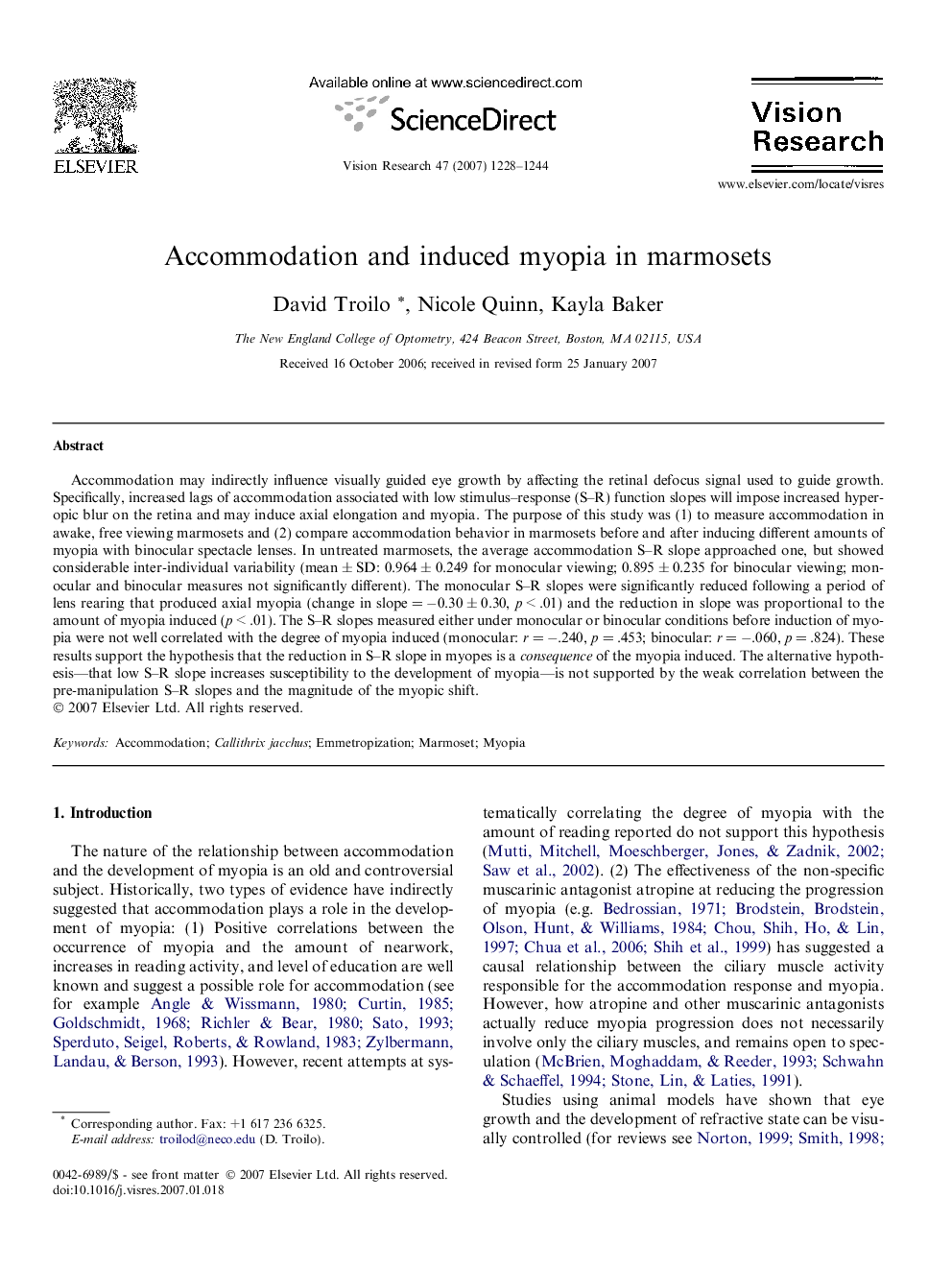| Article ID | Journal | Published Year | Pages | File Type |
|---|---|---|---|---|
| 4035211 | Vision Research | 2007 | 17 Pages |
Accommodation may indirectly influence visually guided eye growth by affecting the retinal defocus signal used to guide growth. Specifically, increased lags of accommodation associated with low stimulus–response (S–R) function slopes will impose increased hyperopic blur on the retina and may induce axial elongation and myopia. The purpose of this study was (1) to measure accommodation in awake, free viewing marmosets and (2) compare accommodation behavior in marmosets before and after inducing different amounts of myopia with binocular spectacle lenses. In untreated marmosets, the average accommodation S–R slope approached one, but showed considerable inter-individual variability (mean ± SD: 0.964 ± 0.249 for monocular viewing; 0.895 ± 0.235 for binocular viewing; monocular and binocular measures not significantly different). The monocular S–R slopes were significantly reduced following a period of lens rearing that produced axial myopia (change in slope = −0.30 ± 0.30, p < .01) and the reduction in slope was proportional to the amount of myopia induced (p < .01). The S–R slopes measured either under monocular or binocular conditions before induction of myopia were not well correlated with the degree of myopia induced (monocular: r = −.240, p = .453; binocular: r = −.060, p = .824). These results support the hypothesis that the reduction in S–R slope in myopes is a consequence of the myopia induced. The alternative hypothesis—that low S–R slope increases susceptibility to the development of myopia—is not supported by the weak correlation between the pre-manipulation S–R slopes and the magnitude of the myopic shift.
